The Casement House
Introduction
Text-to-speech Audio
Images
The Casement House
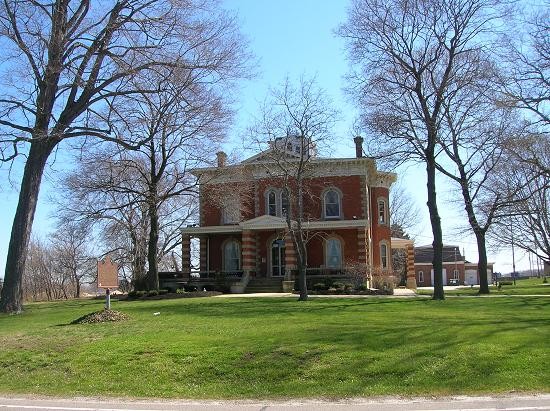
Ohio Historical Marker: The Casement House
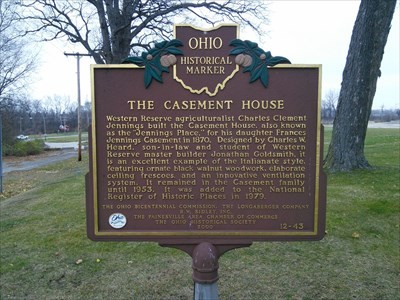
Ohio Historical Marker: General Jack and Frances Jennings Casement
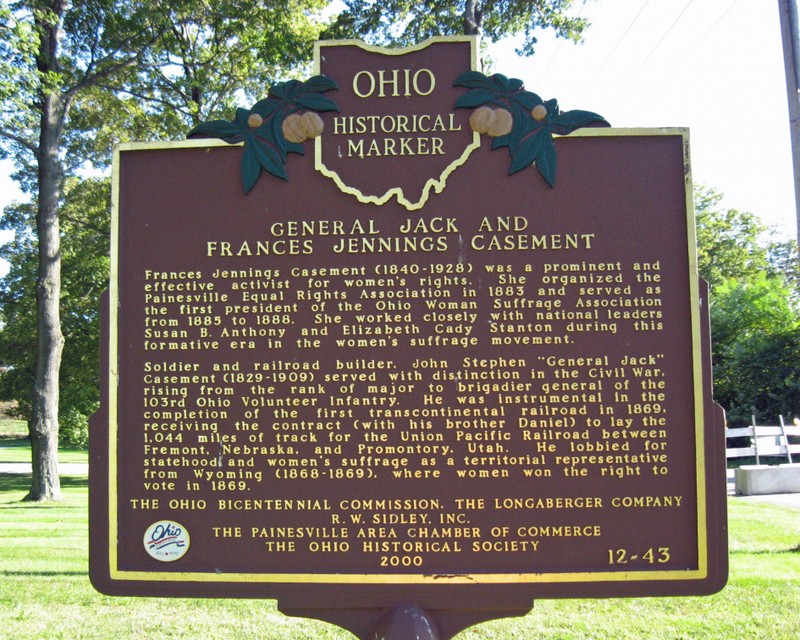
John Casement and Frances Jennings on their wedding day, October 15, 1857
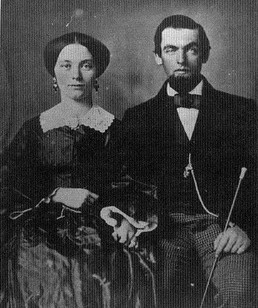
Frances Jennings Casement
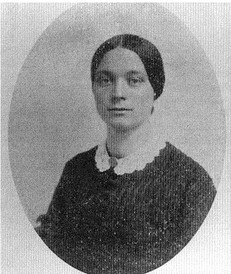
Backstory and Context
Text-to-speech Audio
Frances M. Jennings was born on April 23, 1840 in Painesville, OH, to Charles and Mehitabel (Park) Jennings. Charles C. Jennings was an agriculturalist, but also served his district in the Ohio House of Representatives from 1854-1856 and was staunch opponent of slavery. Her family's wealth allowed Frances to receive a formal education at the Painesville District School, a rarity for children during this time. Frances later graduated from Painesville Academy in 1852 and attended Willoughby Female Seminary (www.theclio.com/entry/94532) in 1855-56. Shortly after completing her studies, she married John Casement on October 14, 1857.
John S. Casement was born on January 19, 1829 in Geneva, NY to Robert and Anna (Curphey) Casement. In 1844, the Casements moved to Michigan, where John began his career in the railroad industry with the Michigan Central Railroad. In 1850, he moved to Ohio to work on the Cleveland, Columbus, and Cincinnati Railroad. The Civil War broke out in 1861, prompting John to enlist in the Ohio Volunteer Infantry. He quickly moved up the ranks from major in the 7th regiment to brigadier general of the 103rd Ohio Volunteer Infantry, and became widely referred to as "General Jack" for his leadership and distinction in the war.
Following the war, John resumed contracting in the railroad industry. General Grenville M. Dodge, Chief Engineer of the Union Pacific Railroad project, hired John to direct construction crews in laying 1,044 miles of track from Fremont, NE to Promontory, UT for the completion of the Transcontinental Railroad. In 1867, John's contract work took him to Wyoming, and it was here that Frances, during visits to her husband, connected with Susan B. Anthony and Elizabeth Cady Stanton for the women's suffrage cause. Like most early suffragists, Frances' beliefs for political equality stemmed from the abolition movement. John was elected a non-voting territorial representative in U.S. Congress in 1868-69, and lobbied for statehood and women's suffrage. He likely played a considerable role in the passing of the Wyoming Suffrage Act of 1869, providing women the right to vote in the territory. When Wyoming became a state in 1890, women retained the right to equal suffrage.
In 1870, John returned to Painesville, OH, and Frances continued to involve herself in the women's suffrage cause. On November 30, 1883, she co-organized the Painesville Equal Rights Association and served as the first President. The purpose of the Equal Rights Association was was not only to gain equal suffrage for women, but also to inform its members of their rights and duties as United States citizens and discuss the political issues of the day. At each gathering, the Equal Rights Association would host a speaker for "parlor talks" on popular culture topics. In 1884, Frances was invited to the 16th annual American Women's Suffrage Convention in Chicago, IL, where she delivered a speech on the progress of women's suffrage in Ohio. She also served as President of the Ohio Woman Suffrage Association (OWSA) from 1885-1888. She continued to work alongside Susan B. Anthony, who would stay at the Casement House when visiting Ohio, as well as other prominent suffrage figures Elizabeth Cady Stanton and Lucy Stone. Unlike many other local suffrage organizations of the time, the Painesville Equal Rights Association did not avoid association with national societies. Casement worked to bridge the disputes between the National Woman Suffrage Association (NWSA) and the American Woman Suffrage Association (AWSA), the two leading national suffrage societies of the time. In 1890, these organizations merged to form the National American Woman Suffrage Association (NAWSA), and Frances and John Casement were made honorary life members in 1907.
The Casement House is a High Victorian Italianate style building, designed by Charles W. Heard of the architectural firm Heard and Blythe. Heard was the apprentice of renowned architect and builder, Jonathan Goldsmith, and was one of the most notable designers in the Western Reserve. The house boasts many unique construction features, such as an innovative ventilation system for its time and plaster work on the ceilings. The 300 acre estate was purchased in 1840 from Colonel Lemuel Storres, an officer of the Connecticut Land Company, the first company to survey the newly chartered Connecticut Western Reserve. The home remained in the Casement family until 1953.
The Casement House was listed to the National Register of Historic Places on July 30, 1975. The property now serves as the corporate headquarters of R. W. Sidley, Inc., a construction-based company who also work hard to share the history of the house and its previous occupants. Appointments can be made to tour the interior, where visitors can still view the impressive ceiling frescoes, original woodwork, and John Casement's library. In 2000, an Ohio Historical Marker was dedicated on the property in recognition of the historic significance of the house and the contributions of Frances and John Casement. In 2001, Frances Jennings Casement was inducted into the Ohio Women's Hall of Fame for her efforts towards women's rights and equality.
Sources
- Fazio, Michael C. "Casement House." National Register of Historic Places Inventory/Nomination Form. Old Mentor Foundation, Mentor, July 30, 1975.
- "12-43 The Casement House," Remarkable Ohio. Accessed May 6 2020. https://remarkableohio.org/index.php?/category/815
- National Park Service. "Wyoming and the 19th Amendment." Last modified August 22 2019. Accessed May 6 2020. https://www.nps.gov/articles/wyoming-women-s-history.htm
- Lubrizol Corporation. 2014.077.021A-M. Poster. From Lake County Historical Society. Accessed May 6 2020. https://lakehistorycenter.pastperfectonline.com/archive/D3AB45A8-6DF6-4E41-BFEC-289216632233
- Abbott, Virginia Clark. The History of Woman Suffrage and The League of Women Voters in Cuyahoga County, 1911-1945. Cleveland: The William Feather Company, 1949. pp. 1-45.
- Tamburro, Samuel J. Frances Jennings Casement and the Equal Rights Association of Painesville, Ohio: The Fight for Women's Suffrage, 1883-1889. Ohio History Journal. pp. 162 - 176.
- Public Broadcasting Service. “Jack Casement (1829-1909) and Frances Jennings Casement (1840-1928).” www.pbs.org/wgbh/americanexperience/features/tcrr-jack-casement-1829-1909-and-frances-jennings-casement-1840-1928/
- Dodd, Adam. "Casement House in Painesville Serves Landmark for Women's Suffrage," The News-Herald. February 6 2020. Accessed May 7 2020. https://www.news-herald.com/news/lake-county/casement-house-in-painesville-serves-as-landmark-for-women-s/article_10a58968-4919-11ea-8547-0b98de9a8985.html
Remarkable Ohio
Remarkable Ohio
Remarkable Ohio
Lake County Historical Society
Lake County Historical Society
